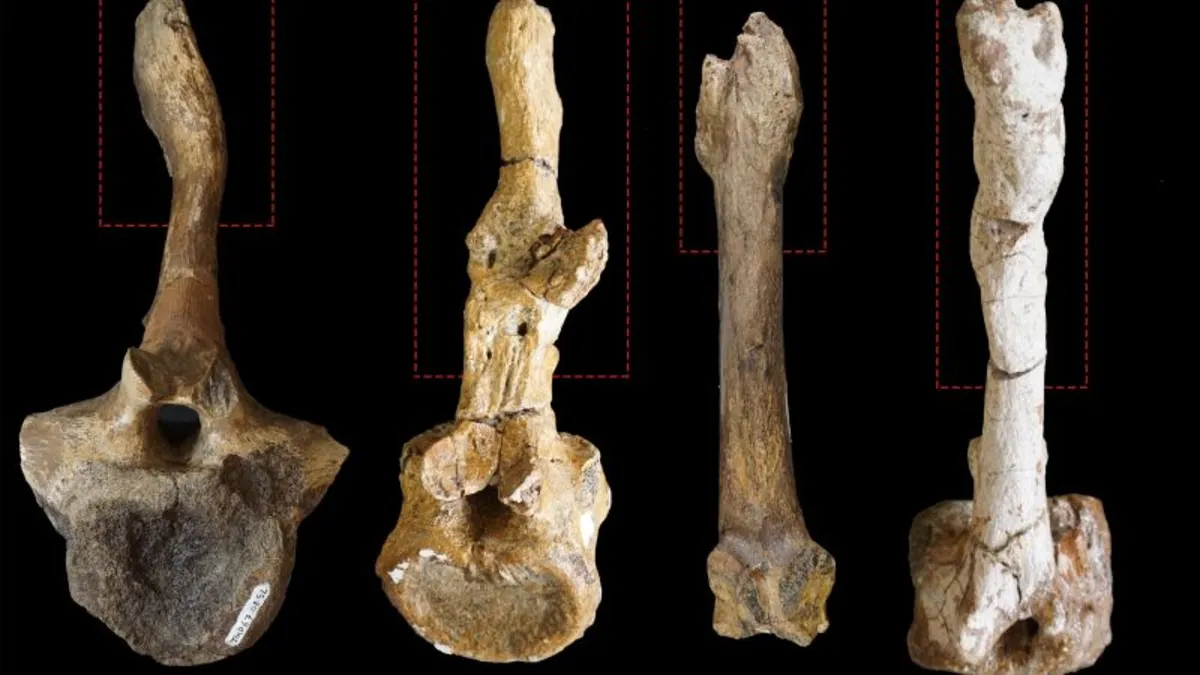
Paleontologists have long grappled with the challenge of distinguishing between male and female dinosaurs based on fossil evidence. However, groundbreaking research may bring scientists closer to accurately identifying the sex of hadrosaurs, commonly known as duck-billed dinosaurs. These herbivorous creatures thrived during the Late Cretaceous Period, approximately 100.5 to 66 million years ago, and their fossils have been unearthed across various continents.
One notable aspect of hadrosaur fossils is the evidence of healing from traumatic bone injuries, specifically located on their vertebrae beyond the base of the tail. The lack of soft tissue preserving reproductive organs in the fossil record has historically made it difficult to discern differences between male and female dinosaurs. Often, variations in fossil morphology are attributed to species or age rather than sex. Moreover, finding evidence of fossilized eggs has proven to be a rare occurrence, further complicating matters.
The authors of a new study, published in the journal iScience, propose that these injuries occurred during mating and could potentially indicate which fossils correspond to female hadrosaurs. Lead study author Dr. Filippo Bertozzo, a researcher at the Royal Belgian Institute of Natural Sciences, emphasized the significance of this research, stating, “This will be a game changer since it will enable other questions to be answered about differences between male and female dinosaurs.”
The discovery of these injuries can be traced back to Canadian paleontologist Darren H. Tanke, who first identified them on hadrosaur vertebrae in Dinosaur Provincial Park, Alberta, in the 1980s. He initially hypothesized that these injuries arose from male hadrosaurs mounting females during mating. However, Tanke's conclusions were primarily based on fossils found in Canada. In 2019, while studying a hadrosaur fossil known as Olorotitan arharensis in Russia, Bertozzo observed similar injuries and invited Tanke to collaborate on further research.
The collaborative team analyzed nearly 500 tail vertebrae from various hadrosaur species housed in museums across North America, Europe, and Russia. Their findings revealed strikingly similar injuries and deformities on the mid-tail region of different specimens. Bertozzo explained, “At the base of the tail, between the sacrum and the mid-point of the tail, the neural spines are broken on their tip, sometimes along the main body of the spine.” The injuries indicated by tilted, swollen, or missing tips suggested that the damage was widespread along the tail's main line.
To validate their hypothesis, the researchers conducted simulations to explore whether the observed injuries could have resulted from other activities in the dinosaurs' daily lives, such as accidental tail stepping, muscular strain, fighting, or feeding. However, none of these scenarios adequately accounted for the injuries discovered in the fossils. Instead, the team proposed that males may have mounted females lying on their sides, inadvertently damaging the neural spines during mating.
The study found that the injuries were not fatal, as there were visible signs of healing and even indications of a second injury. Co-author Gareth Arnott, a professor at Queen’s University Belfast, noted that while aggressive mating behavior may seem evolutionarily disadvantageous, it mirrors behaviors observed in modern species, such as sea lions and certain birds. He remarked on the complexities of reproductive competition in animal biology, particularly concerning extinct species.
Dr. Albert Prieto-Márquez, a researcher at the Miquel Crusafont Catalan Institute of Paleontology, praised the researchers for their innovative approach but emphasized the need for more corroborative evidence. He stated, “Right now, we can’t identify male and female dinosaurs just by looking at tail injuries.” To strengthen their claims, the authors would need to find similar patterns in specimens verified as female, such as those containing eggs or medullary bone.
If this hypothesis is confirmed, it could revolutionize our understanding of hadrosaur fossils bearing such injuries. Bertozzo expressed excitement about the potential implications for further research, suggesting that new avenues could open up, such as examining whether skull crests vary between sexes or identifying anatomical features previously assigned to new species.
The team aims to expand their dataset by studying fossils from regions like China and South America. They also plan to employ more advanced computer simulations to analyze tail movements and muscle volumes across different injury scenarios. Bertozzo is particularly interested in exploring whether similar injuries can be found in other dinosaur types, such as long-necked sauropods.
Despite the promising findings, determining the sex of dinosaurs from bones remains a challenging endeavor. Steve Brusatte, a paleontology professor at the University of Edinburgh, highlighted the inherent uncertainties in interpreting dinosaur behavior due to the absence of direct observational evidence. He stated, “The authors have laid out their case and I think they provide a compelling argument, but there will always be some degree of doubt.”
Dr. Yoshitsugu Kobayashi, a professor at the Hokkaido University Museum, commended the study for its imaginative approach to paleobiology. He acknowledged that while the hypothesis is bold, it opens a captivating window into the personal lives of dinosaurs. “Even if not all the conclusions hold, it shows that bones can preserve traces of behavior we never thought we’d see,” he remarked, underscoring the excitement surrounding the potential for understanding the reproductive behaviors of dinosaurs through fossil evidence.